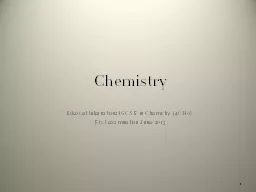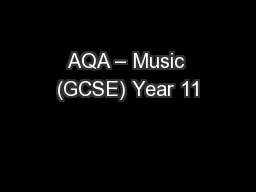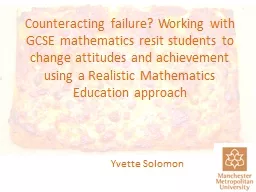PPT-Chemistry Edexcel International GCSE in Chemistry (4CH0)
Author : conchita-marotz | Published Date : 2019-11-23
Chemistry Edexcel International GCSE in Chemistry 4CH0 First examination June 2013 1 Principles of c hemistry States of matter Atoms Atomic structure Relative formula
Presentation Embed Code
Download Presentation
Download Presentation The PPT/PDF document "Chemistry Edexcel International GCSE in..." is the property of its rightful owner. Permission is granted to download and print the materials on this website for personal, non-commercial use only, and to display it on your personal computer provided you do not modify the materials and that you retain all copyright notices contained in the materials. By downloading content from our website, you accept the terms of this agreement.
Chemistry Edexcel International GCSE in Chemistry (4CH0): Transcript
Download Rules Of Document
"Chemistry Edexcel International GCSE in Chemistry (4CH0)"The content belongs to its owner. You may download and print it for personal use, without modification, and keep all copyright notices. By downloading, you agree to these terms.
Related Documents













